Ferrari 12Cilindri Keeps the Naturally Aspirated V-12 Alive with Funky Looks
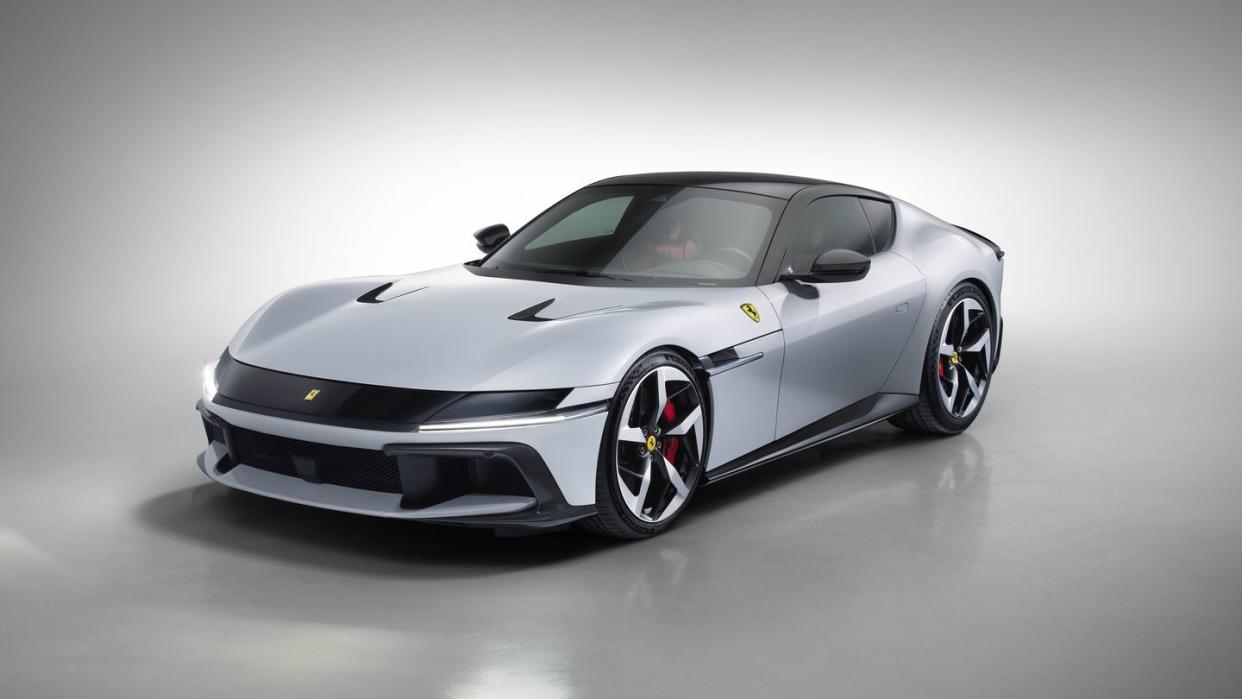
Unless you are Italian, your first attempt to say the name of Ferrari’s new Grand Tourer is almost certainly wrong. English speakers will naturally render the part-numerical 12Cilindri as “twelve cilindri.” But this is incorrect and should be resisted. What you are actually looking at, Ferrari insists, is the “dodici cilindri” and should always be pronounced as such.
The new car’s literal Italian name—twelve cylinders—turns out to have brought a rare outbreak of consensus within Ferrari. Enrico Galliera, the company’s chief commercial officer, admits that coming up with new model titles is often a long and laborious process. But he says that 12Cilindri met with near-universal approval as soon as it was proposed. The fact it is almost certain to be the of Ferrari’s regular road cars to be launched with a non-hybrid, naturally aspirated V-12 makes the name even more appropriate.
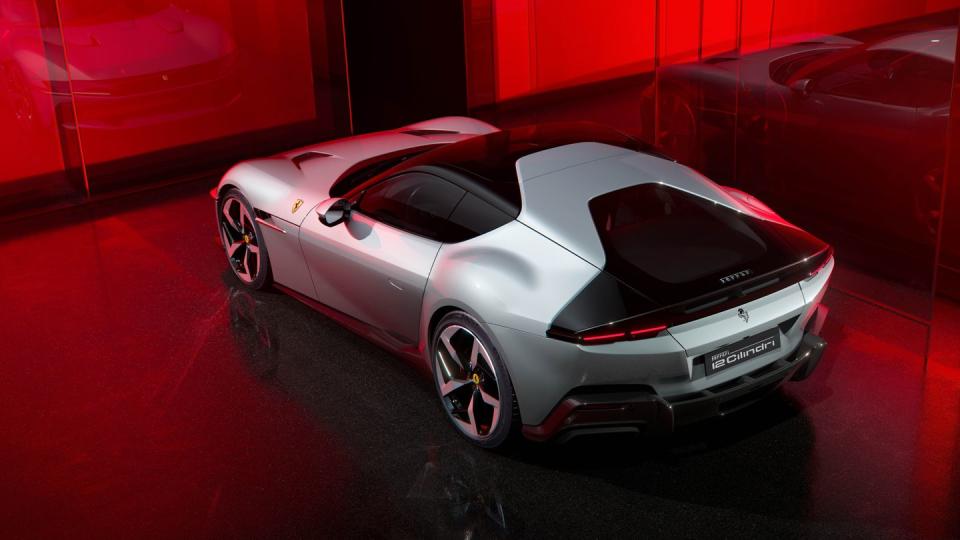
Mechanically, the 12Cilindri can be seen as an evolution of the 812 Superfast it replaces. But the new car’s design marks a clean break from that of its predecessor. The 12Cilindri’s design is both futuristic and, from some angles, strongly evocative of Ferrari’s past. Anyone who can look at the 12Cilindri’s front profile without thinking of the supremely elegant 1968 356 GTB/4 ‘Daytona’ probably needs to brush up on their Ferrari history. Yet although the resemblance is close at the leading edge of the hood, with ultra-narrow lights sitting between a black panel like the fixed headlight Daytona, the new car doesn’t come across as being retro.
At the back, the 12Cilindri coupe is both more radical, and more challenging. Ferrari has integrated active aerodynamics with a pair of triangular wing elements, one on each side, with these finished in black and visually integrated with the dark tailgate glass to create what looks, from directly above, like a top-down silhouette of a stealth fighter. Similar black panels on the roof then carry the same shape forwards. At the preview in Maranello, I spent probably at least an hour staring at the resulting shape, and still can’t tell you if I actually like it or not. But it will undoubtedly make the 12Cilindri very color sensitive, in light shades it will be really obvious, in darker ones much less noticeable. Choose a shade of black to match that of the wings and joining panels and you’ll barely be able to see it.
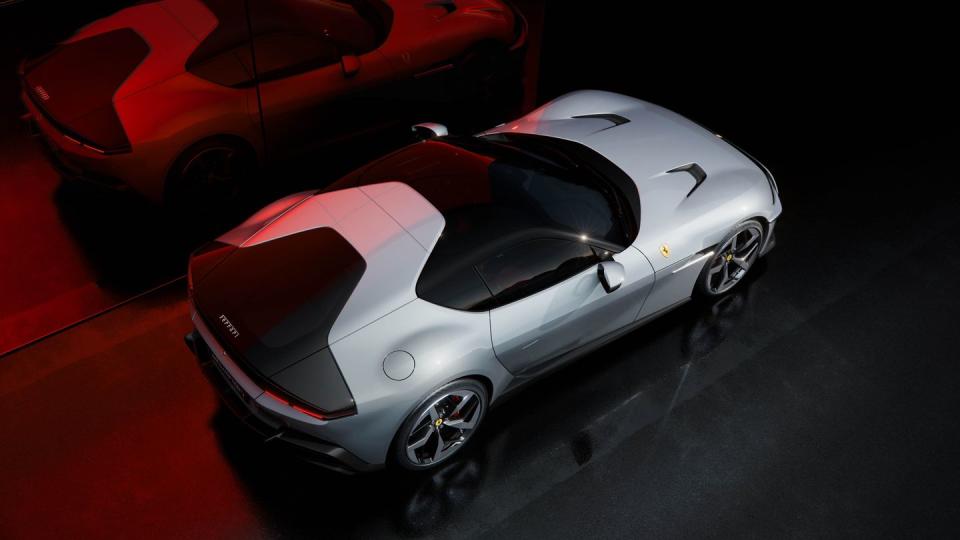
Ferrari will offer a less visually extreme alternative. While there is normally a pause between the company unveiling coupe and convertible versions of the same car, the 12Cilindri Spider is being launched together with the hardtop. This trades the roof for a retractable hardtop, one that will be able to motor itself beneath the double-humped rear deck in 14 seconds. With the top stowed it also looks less Avant Garde than its fixed-roof sibling, with a much smaller black panel sitting between the two winglets.
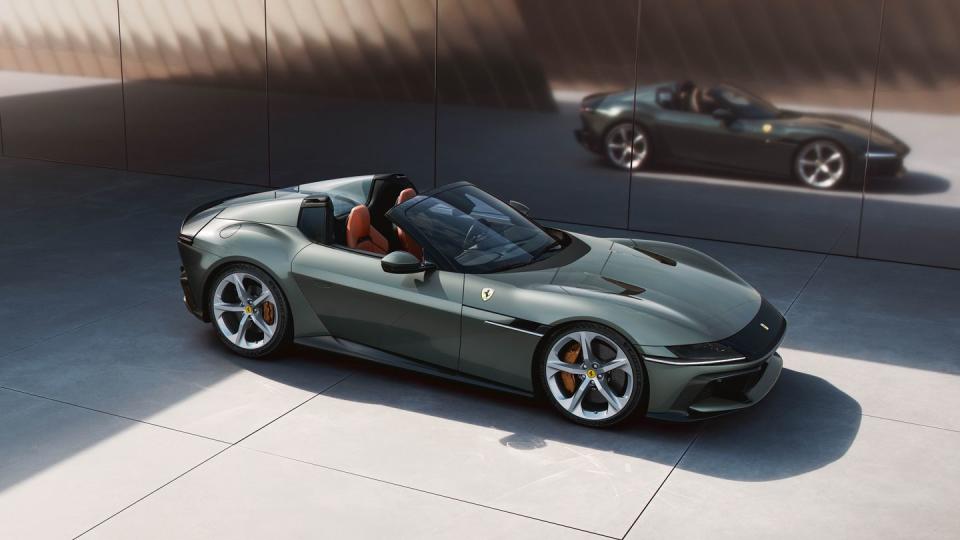
Both versions of the 12Cilindri will share the same interior layout and a new triple-screen dashboard configuration. We are sorry to see the 812’s mechanical rev-counter go; the switch to pure digital instruments feels like an experiential loss. On the plus side the 12Cilindri gets a central 10.2-inch touchscreen that no longer requires drivers to try and control the UI through the steering wheel. There is also a ‘shock and awe’ screen in front of the passenger, as on every front-engined Ferrari V-12 since the F12, to relay either performance data or infotainment functions.
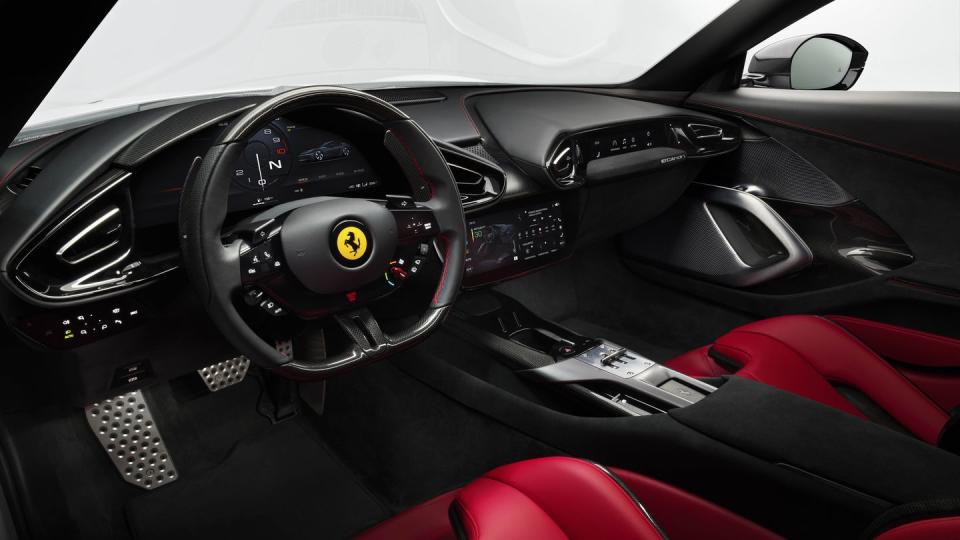
The only big surprise about the 12Cilindri’s powertrain is how unsurprising it is. In a world of turbochargers and hybridization, this remains a pure-blooded naturally aspirated V-12 screamer that sends power exclusively to the rear wheels. The only significant hardware change is the arrival of an eight-speed twin-clutch transmission, replacing the 812’s seven-speeder. On pretty much everything else, the 12Cilindri is within a few percent of its predecessor. Peak power of 818 hp now arrives at 9500 rpm, the altitudinous red line made possible by motorcycle-style finger followers for the valvetrain. That’s 29 hp more than before, but the torque peak—now 500 lb-ft—is 30 lb-ft less. Ferrari promises 80 percent of the new maximum is available from just 2500 rpm.
Ferrari has only released the slightly ridiculous ‘lightest possible’ dry weight claim at the moment—these being for a hypothetical car drained of fluids and filled with angel farts—but on these numbers, the 12Cilindri coupe is 3440 lbs, 77 lbs more than before, with the Spider being an additional 132 lbs over the Coupe. Dimensions are also nearly unchanged, with the 186.3-inch overall length a decrease of 0.9 inches over the 812 Superfast and the 106.3-inch wheelbase being 0.8 inches shorter. To no surprise, performance figures are– officially—a wash, with Ferrari claiming an identical 2.9-second 0-62 mph time and promising the 12Cilindri will match or better the 812’s 7.9-sec 0-124 mph time and 211mph top speed.
Active dynamic functions have, however, all been sharpened. The 12Cilindri will get Ferrari’s full arsenal, including active rear-wheel steering, the stability-enhancing ABS Evo anti-lock brakes we have already seen on the SF90 and 296 GTB, an electronically controlled locking rear differential and the latest v8.0 version of Ferrari’s Side Slip Control. This is the system that can both maximize traction and allow curated quantities of power oversteer to help owners feel like heroes. Managing all this is a ‘six dimensional’ accelerometer which Gianmaria Fulgenzi, Ferrari’s product development officer, says is “more than a generation” beyond the dynamic controller of the 812.
The active aerodynamics promise to deliver theater as well as downforce. The two rear wing elements can both rise by up to 10 degrees, switching the 12Cilindri between what Ferrari describes as high downforce and low drag settings at speeds between 35 mph and 185 mph. Both sides will rise and fall at the same time, so no Zenvo TSR-S style wing-waggling in corners – adding up to 50kg of downforce as they do so. The 12Cilindri’s underbody also features twin vortex generators and a vast rear diffuser to help add more aerodynamic assistance, although Ferrari hasn’t released a peak downforce figure.
For those worrying about the environmental impact of such a symbol of glorious excess— likely a small part of the potential ownership demographic—Ferrari offers some mitigation through the use of recycled aluminum in what are described as the shock towers of the gearbox subframe. Doing this apparently saves 321 lbs of otherwise-emitted CO2—the equivalent of 16.6 gallons of gas. By our calculations, that should translate to around 300 guilt-free miles.
We need to wait for U.S. pricing for both the 12Cilindri Coupe and Spider, although we know that in Italy they will be €324,000 and €357,000 respectively, before options and application of the country’s 22 percent sales tax plus various other environmental charges. Those numbers translate to $345,000 and $381,000 at current exchange rates, time will show if they translate as well as the 12Cilindri’s name.
You Might Also Like

